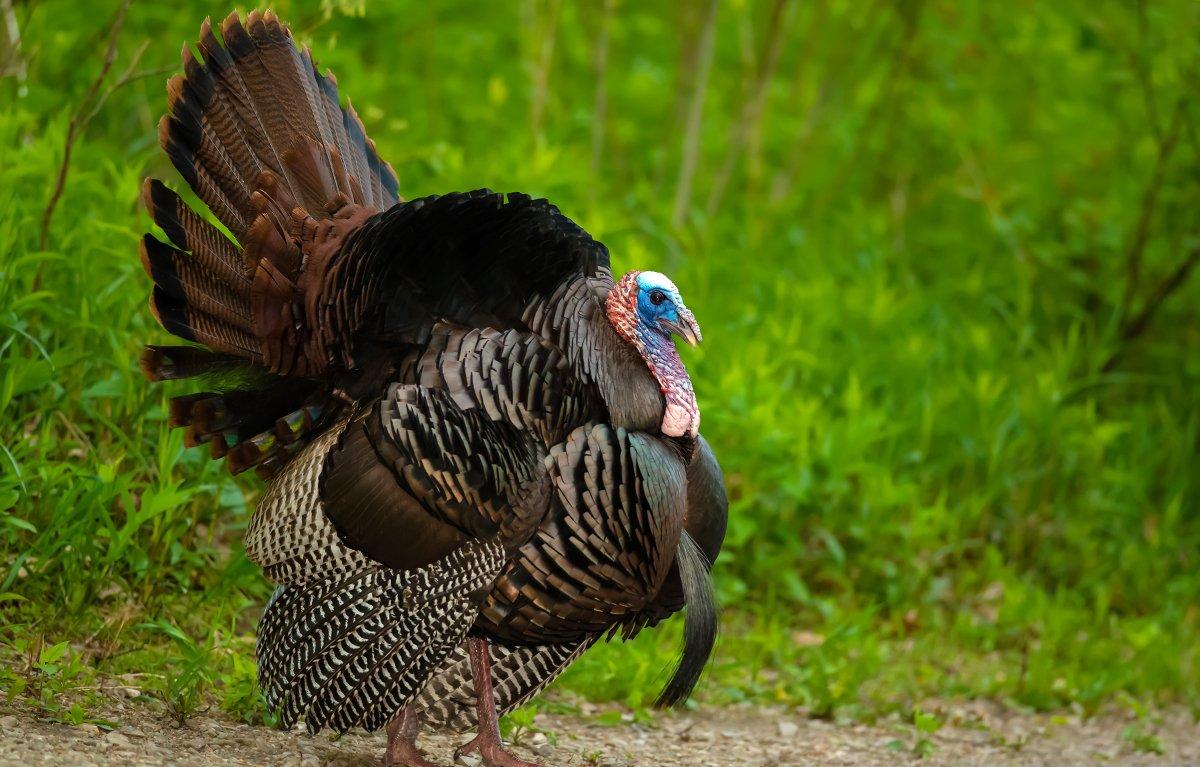Old-time Southern turkey hunters called it the chump and hum or pulmonic puff. Nowadays, we call it, simply, the drumming of a tom turkey during the mating season. While a turkey’s drumming is not nearly so thrilling and hair-raising as his bombastic gobbles, the soft, subtle call is just as important from a hunter’s perspective. If you’re not tuning in to the drumbeats of gobblers, you’re messing up big time.
What is Drumming?
Drumming was once thought by some to be the humming of a gobbler’s shimmying tail feathers during the strutting display. Biologists now agree that the two-note pfft, duuuuummm is a vocalization forced deep from a tom’s chest.
Vocal and soft. On a still morning in open woods, you can hear a turkey drumming up to maybe 80 yards away, if you have good ears. The first part of the call, the pfft, is the loudest and easiest to hear. The low-pitched, drawn-out duuuuummm is softer and fades pretty quickly.
Drumming is a gobbler’s love call for hens, pillow talk if you will. On a spring morning a rowdy tom often gobbles just to gobble, but that doesn’t mean he’ll come to your calls. But listen closely. If a bird gobbles and drums…gobbles and drums some more…he’s pretty hot. Sit tight and keep calling, and there’s a good chance you’ll get that bird.
Tree Drummers
Make a concerted effort to tune in to the drumming call and you’ll locate more roosted turkeys this spring. While a tom may or may not gobble much or at all on the limb each morning, he’ll drum like crazy. A turkey often begins drumming in the dark long before he gobbles. Use that to your advantage.
Let’s say you go out roosting one evening and hear a few gobbles at last gray light. You have a good idea of where that turkey sits on a limb, and you plan to be in the vicinity at first light the next morning. Well, get there 30 minutes earlier than you planned and listen for the birds drumming. Like gobbling, drumming is easiest to hear and course when a turkey is up in a tree. Zero in on steady streams of pfft, duuuuummm calls, and slip tight as you dare to the gobbler in the dark. You’ll be in great calling position if and when the bird begins gobbling at dawn. What about days when you don’t have a turkey put to bed, and when you’re out there prospecting in the predawn? Many mornings I have slipped down ridges and along field edges in the dark, listening for gobbles but grinning upon hearing a bird drumming in the treetops. The best thing about locating turkeys via drumming is that you know a gobbler is roosted within 100 yards. You’re already within great calling range — maybe too darn close — so move slowly and carefully as you look for a setup tree.
Final Drumbeats
The biggest benefit of learning to tune into drumming is to track strutters on the ground as they work toward your calls. Many turkeys drift toward your yelps, gobbling long and hard. But once the birds close inside 75 yards or so, they often tone down their gobbling and rely on intense drumming to entice hens those final yards to them.
On your hunts this spring, the moment an incoming tom tones down or quits gobbling, listen closely for his drumming. Ease your body and shotgun in the direction of the first pfft, duuuuummms you hear. Keep tweaking and panning with the drumbeats of spring until that turkey struts into shooting range.
Don’t Miss: Is it Too Late to Save the Wild Turkey?
















































![Air gun 101: The differences between .177 & .22 – Which jobs they do best ? [Infographic]](https://airgunmaniac.com/wp-content/uploads/2020/09/g44-150x150.jpg)
